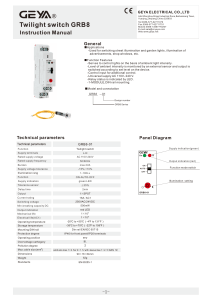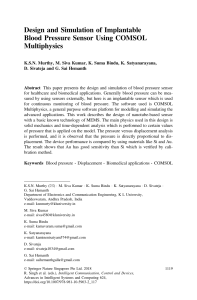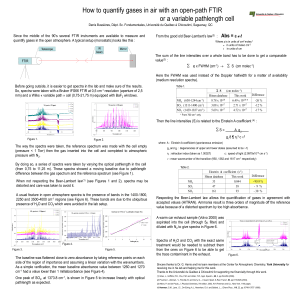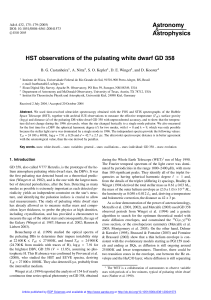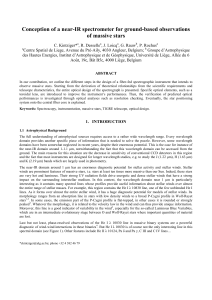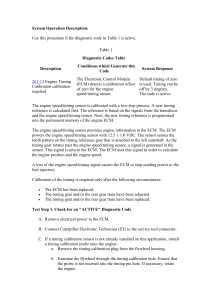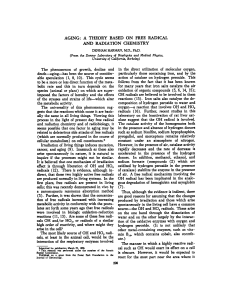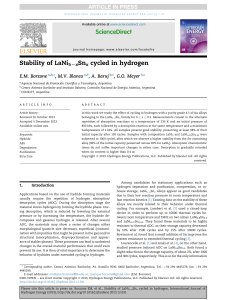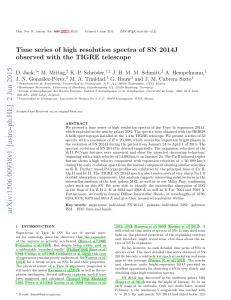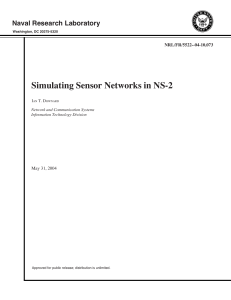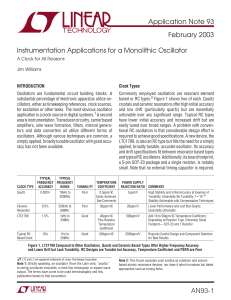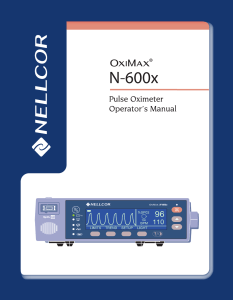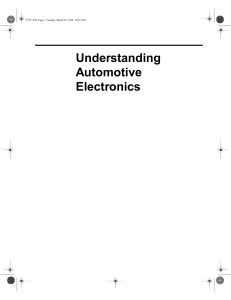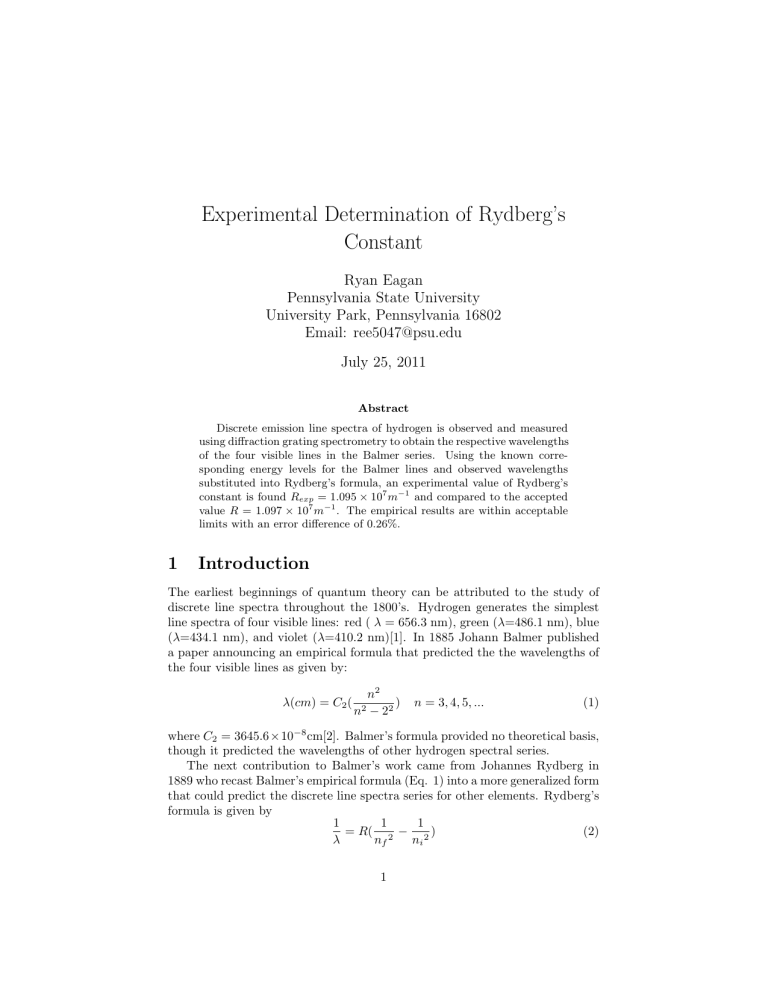
Experimental Determination of Rydberg’s Constant Ryan Eagan Pennsylvania State University University Park, Pennsylvania 16802 Email: [email protected] July 25, 2011 Abstract Discrete emission line spectra of hydrogen is observed and measured using diffraction grating spectrometry to obtain the respective wavelengths of the four visible lines in the Balmer series. Using the known corresponding energy levels for the Balmer lines and observed wavelengths substituted into Rydberg’s formula, an experimental value of Rydberg’s constant is found Rexp = 1.095 × 107 m−1 and compared to the accepted value R = 1.097 × 107 m−1 . The empirical results are within acceptable limits with an error difference of 0.26%. 1 Introduction The earliest beginnings of quantum theory can be attributed to the study of discrete line spectra throughout the 1800’s. Hydrogen generates the simplest line spectra of four visible lines: red ( λ = 656.3 nm), green (λ=486.1 nm), blue (λ=434.1 nm), and violet (λ=410.2 nm)[1]. In 1885 Johann Balmer published a paper announcing an empirical formula that predicted the the wavelengths of the four visible lines as given by: λ(cm) = C2 ( n2 n2 ) − 22 n = 3, 4, 5, ... (1) where C2 = 3645.6×10−8 cm[2]. Balmer’s formula provided no theoretical basis, though it predicted the wavelengths of other hydrogen spectral series. The next contribution to Balmer’s work came from Johannes Rydberg in 1889 who recast Balmer’s empirical formula (Eq. 1) into a more generalized form that could predict the discrete line spectra series for other elements. Rydberg’s formula is given by 1 1 1 = R( 2 − 2 ) (2) λ nf ni 1 where R = 1.09737×107 m−1 is Rydberg’s constant, ni and nf are integers called the principle quantum numbers with ni > nf . The significance of the Rydberg constant was not understood in its entirety until 1913 when Neils Bohr published a paper on the structure of the atom[3]. In Bohr’s structural atomic model, the discrete emission spectra are representative of electron transitions from higher energy states to lower energy states that emit photons of a specific wavelength determined by: f ke2 1 1 1 = = ( 2 − 2) λ c 2a0 hc nf ni (3) where k = 8.99 × 109 N · m2 /C 2 is Coulombs constant, a0 = 0.5292 × 1010 m is the Bohr radius, h = 6.626 × 10−34 J · s is Planck’s constant, e = 1.602 × 10−19 C is the magnitude of electron charge and c = 2.998×108 m/s the speed of light[4]. The principle quantum numbers now represent the discrete allowed energy levels for the electrons with n = 1 being the lowest energy or ground state. We now show the significance of Rydberg’s experimentally determined constant given as: ke2 (4) R= 2a0 hc by substitution into (3) thus yielding Rydberg’s formula Eq. (2). Bohr showed in his model that the orbiting electron had a quantized radius ultimately giving way to the quantization of energy with allowed energy levels: En = ke2 1 ( ) 2a0 n2 n = 1, 2, 3, ... (5) where En is the energy associated with a particular state and for the ground state (n = 1) the energy is E1 = 13.6eV . The final energy state in the Balmer series is the lowest excited state (n = 2) and has an energy of E2 = 3.4eV . The corresponding initial energy states and respective photon wavelengths are shown in Figure 1. Using diffraction grating spectral analysis techniques to obtain the wavelengths of the Balmer series from a hydrogen discharge tube, Rydberg’s constant is measured experimentally by solving (2) for R: R= 4ni 2 λ(ni 2 − 4) (6) The observed hydrogen emission spectra provided only two of the four lines in the Balmer series, green and red. Despite the lack of the blue and violet lines, the experimentally determined value for R (1.095 × 107 m−1 ) is well within the tolerable range of the current accepted value 1.097 × 107 m−1 . 2 Figure 1: Energy-level transitions for various spectral series including the Balmer series. 2 Experimental Methods Spectral analysis of hydrogen gas was performed by diffraction grating spectrophotometry. A PASCO spectrophotometer1 configured with a PASCO high sensitivity light sensor2 and rotary motion sensor3 provided light intensity with respect to angular position. The collimated light from the hydrogen discharge tube was propagated through a diffraction grating with a grating line spacing of 1673nm. The line spacing of the diffraction grating was determined using a PASCO red diode laser4 with a wavelength of 650nm. Observation of the first order fringes in the laser diffraction pattern was obtained to determine the deviation from the central order maximum. Diffraction grating line spacing d was then calculated using the known wavelength and : d= sin θ mλ (7) where m = 1 to yield 1.673 × 10−6 m for the value of d. Angular position data was obtained by the rotary motion sensor coupled with the revolving degree plate used to rotate the light sensor. Angular position calibration was performed over five trials to obtain the mean ratio (0.0169s−1 ) between the degree plate and rotary motion sensor armature, thus the angular x position of spectral data y is given by y = 59.238 where x is the position reported by the rotary motion sensor with a sample frequency of 1400 Hz. 1 PASCO Spectrophotometer, Model No. OS-8537 High Sensitivity Light Sensor, Model No. CI-6604 3 PASCO Rotary Motion Sensor, Model No. CI-6538 4 PASCO Red Diode Laser, Model No. OS-8525A 2 PASCO 3 3 Experimental Results Spectral data was obtained for four trials using the same hydrogen discharge tube. The plot of intensity vs. angular position was then analyzed in PASCO’s DataStudio5 software to obtain the deviation (difference between the central maximum fringe m = 0 and the respective first order fringe m = 1) of the first order spectral patterns. The corresponding wavelength was then determined by λ= d sin θ m (8) where d = 1.673 × 10−6 m is the diffraction grating line spacing and m = 1 for the first order bright fringes. Table 1: The exact value of the wavelength for Bα is λ = 656.3nm and Bβ is λ = 486.1nm. The observed values, with the exception of Bβ in Trial 2, are very close to the exact values. Balmer Line Bα Bβ Trial 1 2 3 4 1 2 3 4 λ nm 654.6 654.8 656.1 656.1 486.4 494.0 488.0 488.0 Robserved (1 × 107 m−1 ) 1.0999 1.0996 1.0974 1.0974 1.0965 1.0797 1.0929 1.0929 The observed spectrum produced only the Balmer Alpha (red, ni = 3) and Balmer Beta (green, ni = 4) lines. The data obtained for both lines in the series were taken from the right side of the central maximum which proved to be the more pronounced or brighter side of the spectrum. Figure 2 shows the obtained spectrum for the fourth trial. The experimental value of R was calculated for each Balmer line over four trials as listed in Table 1. The mean experimental value for R was 1.095 × 107 m−1 with a σ = 6.146 × 104 . This yielded a percent error of approximately 0.26% as compared the accepted value of 1.097373 × 107 m−1 [5]. 5 www.pasco.com 4 Figure 2: Observed spectrum of hydrogen, trial 4. The Beta (green) line is marginal compared to the Alpha (red) line and was originally overlooked upon initial analysis. 4 Conclusion Curiously, the missing two lines of the Balmer series in the obtained spectrum pose a slight mystery. In initially analyzing the spectral data, the Balmer Alpha line was only initially visible. Careful inspection of the plot showed the small fringe of the Balmer Beta line to the left of the Alpha line only after magnification. The assumption made regarding the missing Balmer lines is that their relative intensity was not significant enough for detection by the light sensor. Two possible solutions are a) increasing the gain of the electronic light sensor and b) increasing the size of the collimating slit to allow for more light to propagate. In summary the experimentally determined value of Rydberg’s constant (R = 1.095 × 107 m−1 ) from the line spectra of hydrogen using a simple diffraction grating spectrophotometer yields acceptable results (0.26% error) in comparison to the current accepted value (R = 1.097373 × 107 m−1 ). Furthermore, determination of principle quantum numbers and respective energy levels may deduced from the same methods with similar success. Regarding random error and measurement uncertainty, total differentials proved to be insignificant with regard to the the final precision of the experimental value of R. 5 References [1] Raymond A. Serway and Jr. John W. Jewett. Brooks/Cole, Belmont, CA, fourth edition, 2006. Principles of Physics. [2] Raymond A. Serway, Clement J. Moses, and Curt A. Moyer. Physics. Saunders College Publishing, Philadelphia, PA, 1989. Modern [3] Raymond A. Serway, Clement J. Moses, and Curt A. Moyer. Physics. Saunders College Publishing, Philadelphia, PA, 1989. Modern [4] Raymond A. Serway, Clement J. Moses, and Curt A. Moyer. Physics. Saunders College Publishing, Philadelphia, PA, 1989. Modern [5] Raymond A. Serway and Jr. John W. Jewett. Brooks/Cole, Belmont, CA, fourth edition, 2006. 6 Principles of Physics.

